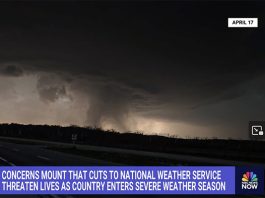Previously published in Lancaster Farming
 A call comes in at the conservation district for farmer and nutrient management planner, Jessica Heim, from a well-intentioned neighbor saying that Jessica’s heifers are on the lawn. “It’s OK, I am grazing my lawn with them,” she said calmly. You could feel the eyebrows raise over the phone from the caller. “With milking after work, constant rain and a broken lawnmower, I figured it was time to extend my grazing paddocks to the lawn,” she explained to the relieved neighbor.
A call comes in at the conservation district for farmer and nutrient management planner, Jessica Heim, from a well-intentioned neighbor saying that Jessica’s heifers are on the lawn. “It’s OK, I am grazing my lawn with them,” she said calmly. You could feel the eyebrows raise over the phone from the caller. “With milking after work, constant rain and a broken lawnmower, I figured it was time to extend my grazing paddocks to the lawn,” she explained to the relieved neighbor.
How did this revelation of fuel-less lawn mowing come about? A rotational grazing strategy for dairy heifers in a nearby 20 acre field implemented by husband Matt and the need to save on feed costs, really got the ball rolling. Jessica mirrored this system at their home and adjacent 1 1/2 acres for a few of her favorite heifers. Portable fencing allows for subdividing this mini acreage into an efficient use of what she has to work with. “ It just made sense to look at my lawn as forage, when daily feed costs can run upwards of 2 dollars per day” she said. “Basically I’m cheap. If I can get a little feed, keep my animals happy and save some gas, it all helps towards the bottom line. Anyway, it takes me less time to set up the portable fences than it does to mow”, she said empathically.
Figuring the economics on this ½ acre lawn grazing exercise with 4 heifers yielded a $42 net profit (4 head. x 1.50/day x 7 days). Extrapolate this over the entire 2 acres for the grazing season and see a 1000 dollars worth of excitement for Jessica’s “crazy” idea. Small can be beautiful!!
The health benefits to the cows and the earthworms have been realized. The lawn seems happy by utilizing the natural fertilization to grow more plants. Jessica’s wallet has a few more greenbacks in it. So what’s the downside? It can make for an interesting game of badminton or pitch and putt. Having friends over for a party may require the proper footwear and recognition of extra sensitive areas. Jessica has taken all this in stride by letting the hopscotch pies dry out and uses targeted mowing to mitigate the effects on friends. “I can roll with a little scrutiny since my heifers look so good at such a low cost. I’m working with what I have to grow the herd and save time in my busy schedule. Besides, the “view” from the back porch is awesome.” she exclaimed.





Very interesting concept, thanks for sharing.
I have used this method to achieve volume reduction on the grass that would slow down a lawn mower. A lot can be achieved in 30 minutes to an hour’s worth of grazing. It can be evened up with a mower pretty fast after that. If you focus on turning the cows in at early morning or early evening when they have major grazing periods, they seem to want to volumize on grass and do not browse on flowers and shrubs much. Calves are the first to lose interest. So when they start showing interest in flowers, move the herd out and wait til the next major graze period. Gardens do need to be protected though. Small section access with polywire works great as well. But I too have had the cows are out calls.
We do this. We call them “Lawn Mooers”.
Carole
Comments are closed.